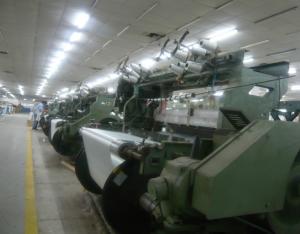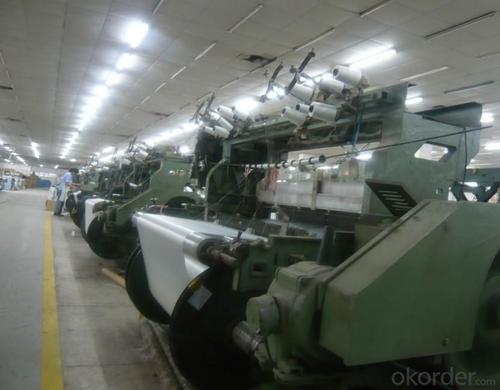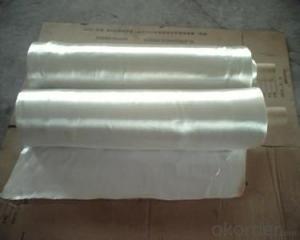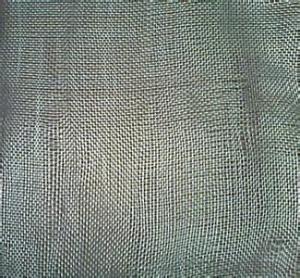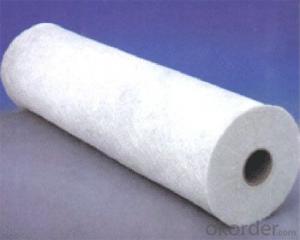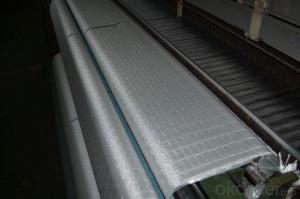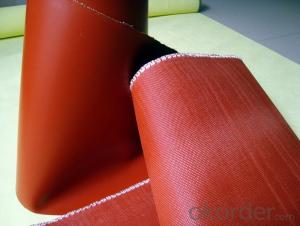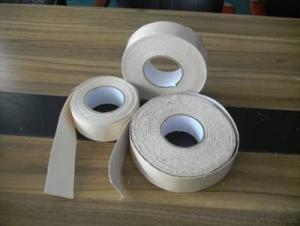Fiberglass Fabric Strip for Best Surfboard Fabrics
- Loading Port:
- Qingdao Port
- Payment Terms:
- TT or LC
- Min Order Qty:
- 10000 M2 m²
- Supply Capability:
- 50000000 M2 Per Year m²/month
OKorder Service Pledge
OKorder Financial Service
You Might Also Like
Introduction of Best Fiberglass Fabrics for surfboard:
Fiberglass fabric is corrosion resistance, high intensity, electricity insulation, compatibility with other resin. Fiberglass fabric is widely used into electric insulation field for PCB or copper clad laminate.
The excellent properties of Best Fiberglass Fabrics for surfboard:
* Dimensional stability
* High Strength
* Fire resistance, High heat resistance
* Good chemical resistance
* Durability
* Forms around complex surface shapes
Packing of Best Fiberglass Fabrics for surfboard:
The Fiberglass fabric for surfboard is wrapped on a paper tube with inner diameters of 50. 8, 76 or 152mm. Each roll is wrapped in a plastic bag, then to be packed in a carton box. The rolls are to be horizontally placed.
Width (cm): 90, 100, 127
Length (m): 100, 200, 300, 400
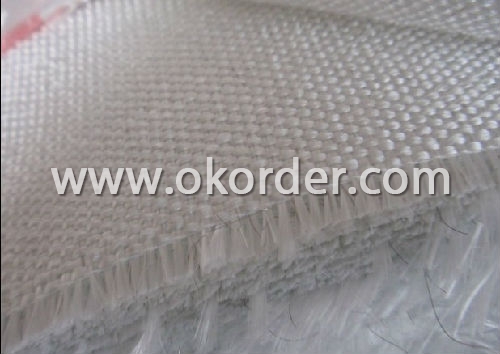

- Q: The main characteristics of aluminum foil composite glass fiber cloth
- The tensile strength is better, more square veneer: glass fiber reinforced aluminum foil clamp strength reinforced aluminum foil mechanical high, more suitable for glass wool, rock wool, mineral wool factory factory factory online.
- Q: Can fiberglass fabrics be used for insulation in cryogenic applications?
- Indeed, cryogenic applications can employ fiberglass fabrics for insulation purposes. With its outstanding thermal insulating properties and ability to endure exceedingly low temperatures, fiberglass proves to be a fitting choice. Its utilization is prevalent in the construction of cryogenic storage tanks, pipelines, and equipment, effectively reducing heat transfer and preserving the desired low temperatures. Moreover, the lightweight, flexible nature of fiberglass fabrics, along with their resistance to moisture, further contribute to their aptness in cryogenic insulation.
- Q: Are fiberglass fabrics suitable for use in the marine industry?
- The marine industry finds fiberglass fabrics to be highly appropriate. Fiberglass, a sturdy and adaptable material, offers numerous advantages for marine applications. To begin with, fiberglass fabrics possess exceptional resistance to water, chemicals, and UV radiation. This makes them well-suited for enduring prolonged exposure to the harsh marine environment. The fabric remains intact and unaffected when subjected to saltwater, sunlight, or other corrosive elements commonly found in the marine industry. Additionally, fiberglass fabrics boast high tensile strength while being extremely lightweight. This makes them ideal for boat hulls, decks, and other structural components. The strength-to-weight ratio of fiberglass fabrics allows for the construction of sturdy yet lightweight marine vessels, resulting in improved fuel efficiency and performance. Moreover, fiberglass fabrics are known for their excellent thermal insulation properties. This is particularly important in the marine industry. The insulation provided by fiberglass fabrics helps regulate temperature, ensuring that the interior of boats or ships stays cool in hot weather and warm in cold weather. This is beneficial for maintaining comfort and reducing energy consumption onboard. Furthermore, fiberglass fabrics are easily manipulated and can be molded into various shapes and sizes. This allows for the creation of customized marine components. They can be used to reinforce or repair existing structures, as well as for the construction of new boats or ships. In conclusion, fiberglass fabrics are highly suitable for use in the marine industry due to their durability, resistance to harsh elements, high strength-to-weight ratio, thermal insulation properties, and versatility. Their wide range of applications and excellent performance make them a preferred choice for boat builders, shipyards, and other marine industry professionals.
- Q: How is fiberglass fabric coated?
- Fiberglass fabric is coated using various methods, depending on the desired end use and specific requirements. One common method is called resin coating, where a liquid resin is applied to the fabric. The resin can be either epoxy or polyester based, and it is typically mixed with a catalyst to initiate the curing process. The fabric is then saturated with the resin and excess resin is removed to ensure an even coating. Another method is called silicone coating, where a layer of liquid silicone is applied to the fabric. Silicone coatings provide excellent heat resistance and flexibility, making them suitable for applications such as insulation or protective covers. In some cases, fiberglass fabric may be coated with other materials such as polyurethane or PTFE (polytetrafluoroethylene), commonly known as Teflon. Polyurethane coatings provide enhanced abrasion resistance and flexibility, while PTFE coatings offer excellent non-stick properties and high temperature resistance. The coating process can be carried out using various techniques, including dip coating, spray coating, or roller coating. Dip coating involves immersing the fabric into a tank filled with the coating material, while spray coating utilizes a spray gun to evenly distribute the coating onto the fabric surface. Roller coating involves passing the fabric through a set of rollers that apply the coating in a controlled manner. Overall, the coating process is crucial in enhancing the performance and durability of fiberglass fabric, allowing it to be used in a wide range of industries such as aerospace, automotive, construction, and marine.
- Q: How is fiberglass fabric used in the production of sports helmets?
- Fiberglass fabric is used in the production of sports helmets as it provides strength and durability to the overall structure. The fabric is commonly used as a reinforcement material in the helmet's shell, allowing it to withstand impacts and distribute the force of the impact across the surface of the helmet. This helps to protect the wearer's head from potential injuries during sports activities.
- Q: Is fiberglass fabric resistant to chemicals in oil and gas industry?
- Yes, fiberglass fabric is generally resistant to chemicals in the oil and gas industry. It is known for its excellent chemical resistance properties, making it a suitable material for various applications in this industry.
- Q: What is the dimensional stability of fiberglass fabric?
- Fiberglass fabric possesses remarkable dimensional stability, which is characterized by its capacity to sustain its shape and size without substantial stretching, shrinking, or warping in diverse circumstances. This outstanding dimensional stability is primarily attributed to the composition of fine glass fibers that are interlaced to create a taut and uniform structure. The glass fibers employed in fiberglass fabric demonstrate a high tensile strength, rendering them resistant to elongation or stretching. Consequently, the fabric remains true to its original dimensions even when subjected to mechanical stress or tension. Moreover, the glass fibers exhibit a low coefficient of thermal expansion, signifying minimal expansion or contraction in response to temperature fluctuations. This thermal stability greatly contributes to the fabric's ability to uphold its shape and size across a wide range of temperatures. Additionally, fiberglass fabric exhibits exceptional resistance to moisture absorption and chemical degradation. Unlike many other fabrics, fiberglass fabric repels water, thereby preventing significant absorption and subsequent dimensional alterations caused by moisture. Furthermore, the chemically inert nature of the glass fibers ensures resistance to most chemicals, safeguarding the fabric against chemical degradation that may compromise its dimensional stability. In conclusion, fiberglass fabric possesses excellent dimensional stability, making it a preferred choice in numerous industries such as aerospace, automotive, construction, and marine. Its capacity to maintain its shape, size, and structural integrity under diverse conditions renders it suitable for applications that demand consistent and dependable performance.
- Q: Are fiberglass fabrics resistant to mildew or fungus?
- Yes, fiberglass fabrics are generally resistant to mildew or fungus. This is because fiberglass is a non-porous material that does not provide an ideal environment for the growth of mold, mildew, or fungus. Additionally, fiberglass fabrics are often treated with special coatings or finishes that enhance their resistance to these types of organisms. However, it is important to note that while fiberglass fabrics are generally resistant to mildew or fungus, they are not completely immune. If the fabric is exposed to very high levels of moisture or is not properly maintained, it is still possible for mildew or fungus to develop. Therefore, it is recommended to follow proper cleaning and maintenance procedures for fiberglass fabrics to ensure their longevity and to prevent any potential growth of mold or mildew.
- Q: What is the "three proof cloth"? How to correctly use the three proof cloth?
- (1) car, train, ship freight tarpaulin.(2) it can be used for camping tents and protective covers for all kinds of machines and machinery.(3) temporary granary and all kinds of crops can be set up for outdoor covering.(4) it can be used as an open-air warehouse for stations, docks, seaports and airports.(5) can be used for electric power construction site construction site and other site temporary sheds, temporary warehouse materials.
- Q: How does fiberglass fabric perform in terms of flexibility?
- Fiberglass fabric is known for its exceptional flexibility. Due to its composition of fine glass fibers, it can be easily molded and bent into various shapes and contours without losing its structural integrity. This flexibility makes fiberglass fabric highly versatile and suitable for a wide range of applications. It can be used in industries such as automotive, aerospace, construction, and even fashion, where flexibility and adaptability are crucial. Additionally, fiberglass fabric can withstand repeated bending and stretching without experiencing significant wear or tear, making it a durable choice for projects that require long-term flexibility. Overall, fiberglass fabric performs exceptionally well in terms of flexibility, offering designers and manufacturers the freedom to create innovative and dynamic products.
1. Manufacturer Overview
| Location | Shandong, China |
| Year Established | 1964 |
| Annual Output Value | Above US$ 20 Million |
| Main Markets | 20.00% North America 20.00% South America 10.00% Eastern Europe 10.00% Southeast Asia 10.00% Northern Europe 10.00% South Asia 10.00% Western Europe 5.00% Africa 5.00% Mid East |
| Company Certifications | ISO9001:2000 |
2. Manufacturer Certificates
| a) Certification Name | |
| Range | |
| Reference | |
| Validity Period |
3. Manufacturer Capability
| a) Trade Capacity | |
| Nearest Port | Qingdao Port |
| Export Percentage | 31% - 40% |
| No.of Employees in Trade Department | 10-20 People |
| Language Spoken: | English; Chinese; |
| b) Factory Information | |
| Factory Size: | Above 200,000 square meters |
| No. of Production Lines | Above 10 |
| Contract Manufacturing | Design Service Offered; Buyer Label Offered |
| Product Price Range | High; Average |
Send your message to us
Fiberglass Fabric Strip for Best Surfboard Fabrics
- Loading Port:
- Qingdao Port
- Payment Terms:
- TT or LC
- Min Order Qty:
- 10000 M2 m²
- Supply Capability:
- 50000000 M2 Per Year m²/month
OKorder Service Pledge
OKorder Financial Service
Similar products
Hot products
Hot Searches
Related keywords
